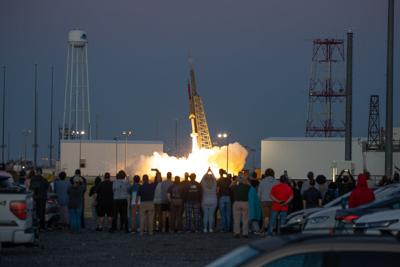ATLANTIC, Va.- Approximately 60 university student experiments were successfully launched Friday, June 24, aboard a NASA suborbital sounding rocket from Wallops Flight Facility in Virginia.
The sounding rocket lifted off at 5:35 a.m. The mission is part of the RockOn! and RockSat-C programs designed for students to learn and apply skills in building experiments for suborbital space flight. About 140 students in the programs were at Wallops to view the launch.
Conducted with the Colorado and Virginia Space Grant Consortia, RockOn! is in its fourteenth year and RockSat-C its thirteenth year.
The 39-foot tall rocket carried 39 experiments from the RockOn program and seven experiments in the RockSat-C program. Also, approximately 80 small cubes with experiments developed by middle- and high-school students were flown as part of the Cubes in Space program, a partnership between idoodlelearning inc., Wallops and the Colorado Space Grant Consortium.
Launched aboard a two-stage Terrier-Improved Orion rocket, the student experiments flew to an altitude of nearly 70.5 miles. After descending by parachute and landing in the Atlantic Ocean, the experiments were recovered. The experiments will arrive back at Wallops later in the day and returned to the students to see how their experiments performed.
The next launch from Wallops is RockSat-X on a Terrier-Improved Malemute scheuled for the morning of Aug. 9, 2022. RockSat-X is the upper level of the three-tier student program, with experiments developed that are more complex than those in RockOn and RockSat-C.


